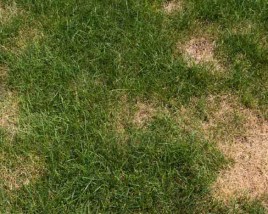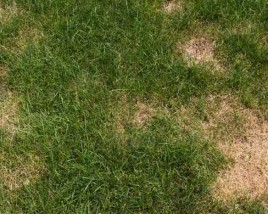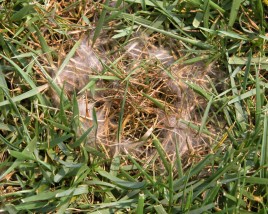Fall is the Time to Repair Turf Damage

When talking turf and it’s ever so prevalent diseases, fall is the time for fixing damages brought by the typical summer heat and preparing for the problems of spring. This year, the east coast has experienced somewhat strange weather patterns. In 2012, we saw one of the hottest, driest summers on record. This year, we’ve seen quite the opposite. We’ve seen heavy rainfall and cooler temperatures.
This year, the Philadelphia tri-state area witnessed wetter and cooler weather compared to our average summer weather conditions. This weather sets the stage for vulnerable grass. “Beautiful, green turf isn’t quite accomplished in wetter, shaded, and cooler conditions weather conditions,” says Tom Knopsnyder, VP of Operations at Green Lawn Fertilizing. “Our area will continue to witness destructive turf diseases brought by summer’s heavy rainfall and cooler temperatures.” In our region, the types of diseases that will need fungicidal treatment will depend on the grass types. Cool season grasses such as Tall Fescue, and Ryegrass are especially vulnerable. Kentucky bluegrass and creeping bentgrasses can be susceptible as well. Some of the lethal turf disease we’ll witness this fall in our region will range from dollar spot, red thread, gray leaf spot and brown spot. We could also experience snow mold depending on the weather conditions.
Recognizing the problem
It’s important to know what you’re dealing with when it comes to turf disease. Part of the reason why is simply because there are only a limited amount of companies that can successful treat for them. Green Lawn Fertilizing is one of the companies that can identify the disease, treat it accordingly using their Fungicide program and repair and prepare for the upcoming winter and spring months. Diseases can look very similar to one another and it’s essential that a state-certified lawn manager is out on your lawn to identify the disease and treat it with the right product. Green Lawn Fertilizing will always provide you with a free lawn disease evaluation to identify the problem on the turf.
Scouting your Turf

Brown Patch Disease
Visual indicators can always help narrow down what the disease is. Brown patch for example is usually dominant through summer into September and shows lacerations on the leaf blades. The borders are typically brown/red colored and the interior of the abrasions are tan colored. It’s vital when reviewing the colors because brown patch can easily be flawed for dollar spot which has bleach white center lacerations in the blades. Unfortunately, with brown patch and gray leaf spot you can get some fuzzy mycelium spore growths or even mass amounts of growths when you have wet conditions. With red thread, when lawn conditions are overly wet for a mass amount of time you have foliar symptoms. You’ll witness various thin strands that are reddish in color. Scouting your turf is essential to identify, repair and prepare your turf for the upcoming lawn care months.
Responsive Treatment

Pythium Blight
With the unusually wet summer conditions in much of our region, more disease on cool season grasses such as brown patch and pythium are likely to appear. That means our managers will be recommending aeration and seeding on some of those infected areas. Since our region’s grasses will soon be going dormant in winter’s cooler months, the solution to the major damage from the summer will be in the form of reseeding, overseeding and fertilizing to get the grass back in shape before its dormancy.
Defensive treatment
There’s an old saying, “the best offense is a good defense.” When managing turf, experts believe a well-balanced soil practice with bring well-balanced pH to promote good health. Practices such as having a well-balanced pH and good fertilizing will reduce stress against any plant and defend against disease infringement. It’s also good to assume that any area infected with a disease in the past is prone to accepting additional diseases in the future. Using a broad-spectrum fungicide as a preventative measure may also help reduce the risk of a reap offense. Additional preventative measures include: fungicide applications, aerification and maintain proper levels of fertilization and irrigation. Long-term measures include appropriate drainage systems and planting diseases-resistant turf species.